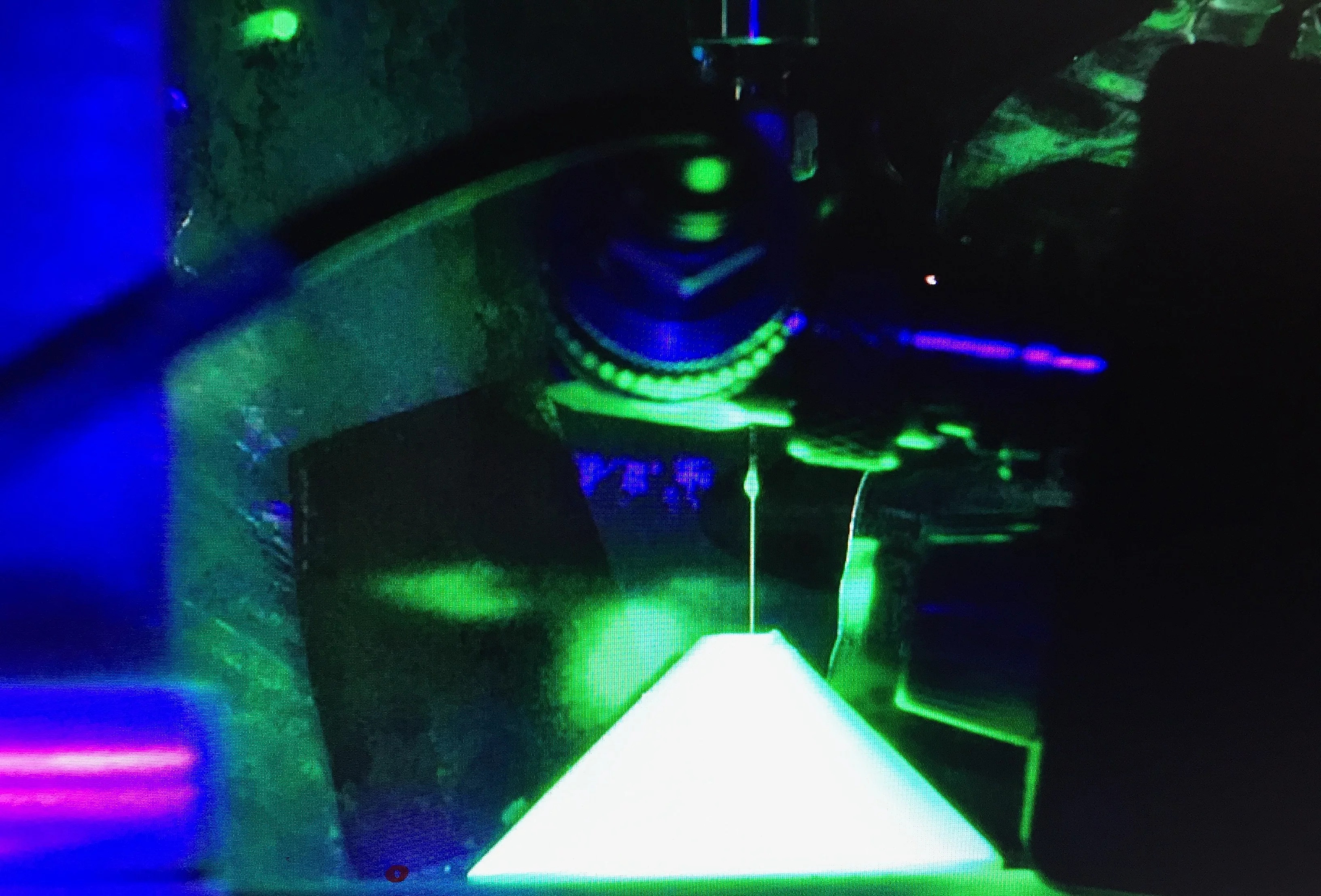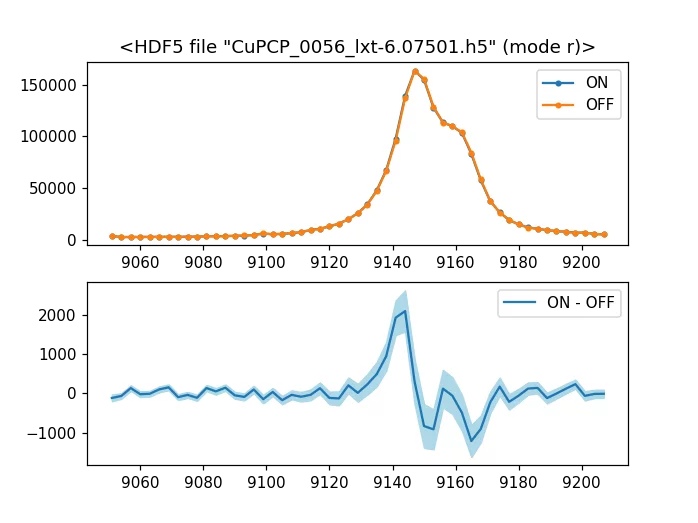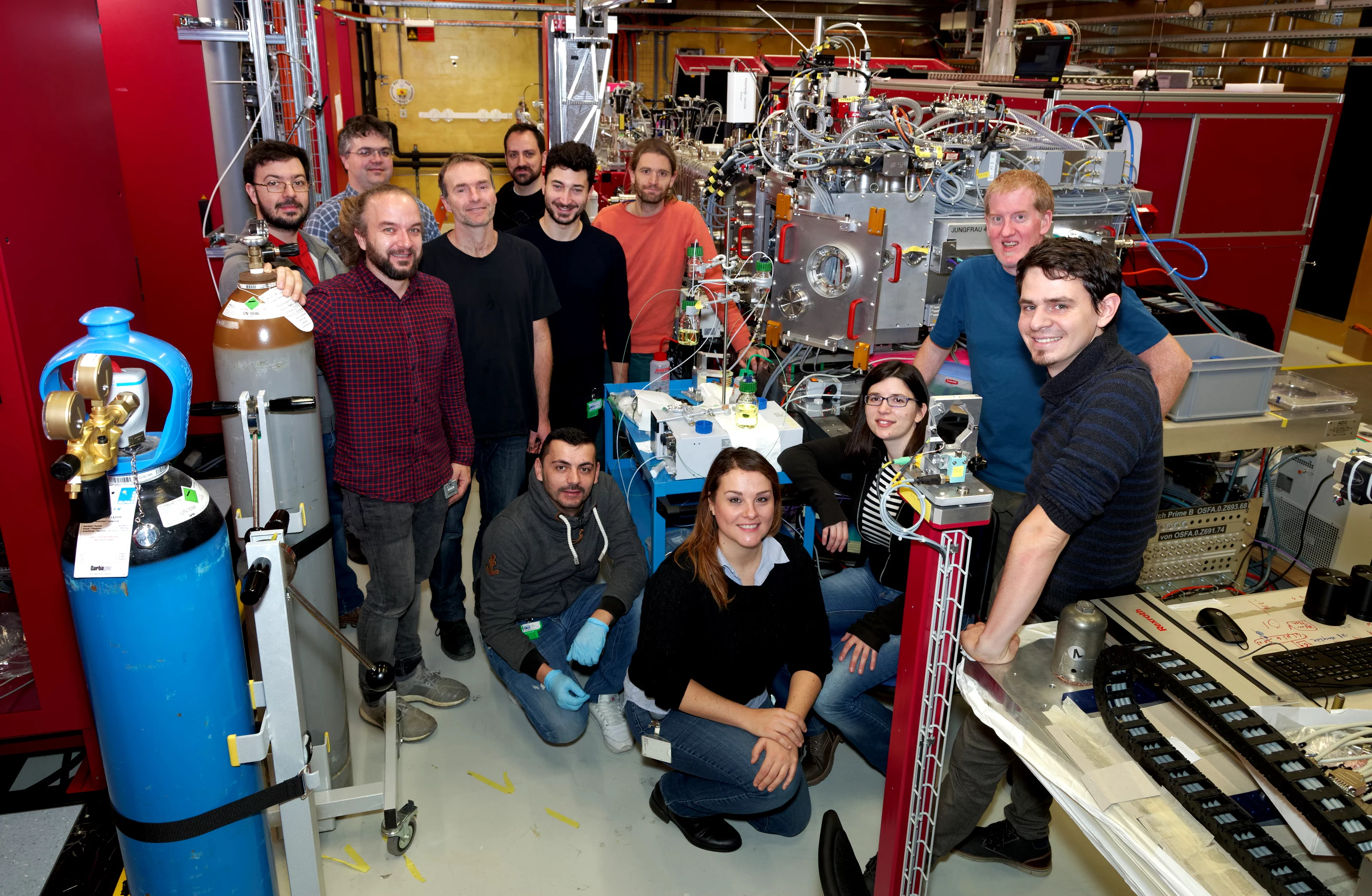Alvra performed it's very first Pilot Experiment in December 2017, where the facility could only reach 2.3 keV and we had a very bare-bones installation of equipment at the Prime experimental station. The experiment we planned was to investigate a Cu-P OLED material from Dr. Matthias Vogt (then Uni. Bremen, now Martin-Luther-Universität Halle-Wittenberg) that had been investigated by Dr. Grigory Smolentsev at both the ESRF, using wide-angle X-ray scattering (WAXS), and the SuperXAS beamline of the SLS, using X-ray absorption near-edge spectroscopy at the Cu K-edge (9 keV). Both experiments performed at storage rings were looking at the long-lived triplet excited state of the complex, which is responsible for the energy storage properties of the OLED. This triplet population can then be back-transferred to the luminescent singlet state, resulting in so-called thermally activated delayed fluorescence (TADP). TADP is why this material produces this intense green emission, and understanding the interplay between the singlet and triplet states is key to engineering OLED materials.
The goal of the Alvra experiment was to probe the OLED material from the perspective of the P-atoms in the complex, to provide information on the excited state of the material and how the P plays a role in the luminescence of the material. DFT calculations had predicted some form of charge-transfer or sharing between the Cu and P atoms. which we would be able to confirm using X-ray spectroscopy on the P-atoms. We had the very first beam in the Prime chamber December 5th and we finished the morning of December 18th. During that time we measured non-resonant X-ray emission from the K-alpha emission lines from phosphorus after photo-exciting the Cu-P OLED material using 450 nm light. The emission was measured using a dual-crystal von Hamos spectrometer, with one Si(111) crystal and one InSb(111) crystal, both of which were set to Bragg angles for the K-alpha emission. The signals were measured on our 4.5M Jungfrau detector, which had only been mounted on the spectrometer vacuum chamber in the beginning of December. Miraculously the experiment worked and we measured a pump-probe signal from the P XES.
The results of these X-ray experiments has just been published in Nature Communications, where by combining the three different experimental results the structure and electronic character of the triplet excited state has been identified. We wrote up a blog entry on the result for the Nature Chemistry Community blogs and a PSI Research Highlight was also written, but perhaps the most exciting outcome was an interview with RSI in Italian with Alvra's very own Dr. Claudio Cirelli. These results provide insight into why this particular molecule is such an efficient OLED, and provides clues as to how such materials can be used in the future for optoelectronic devices.


